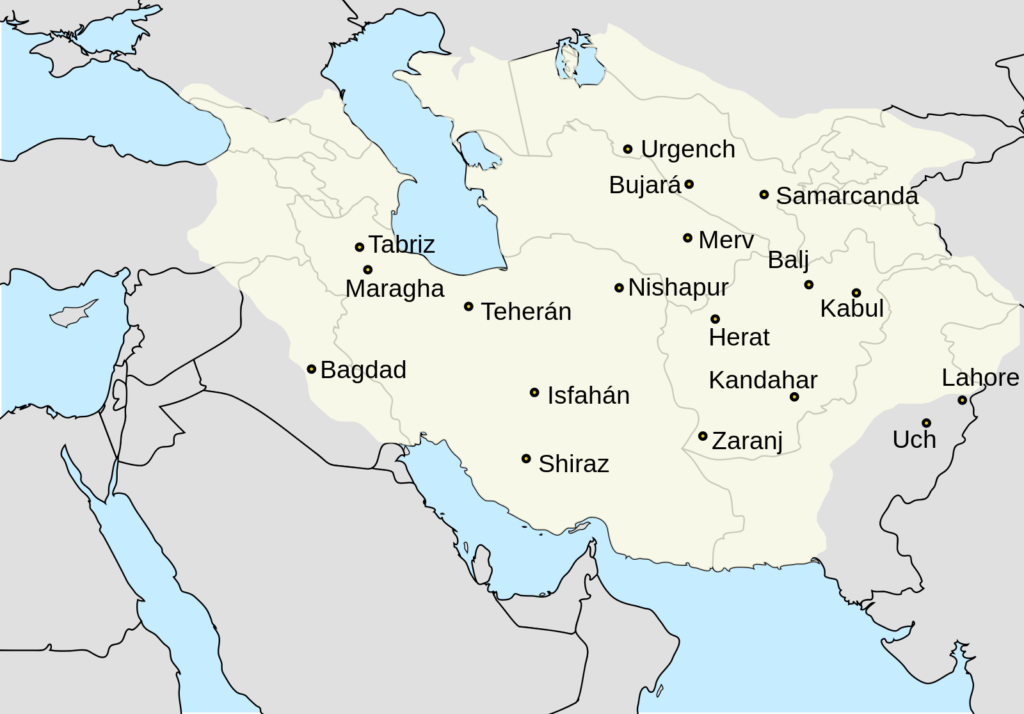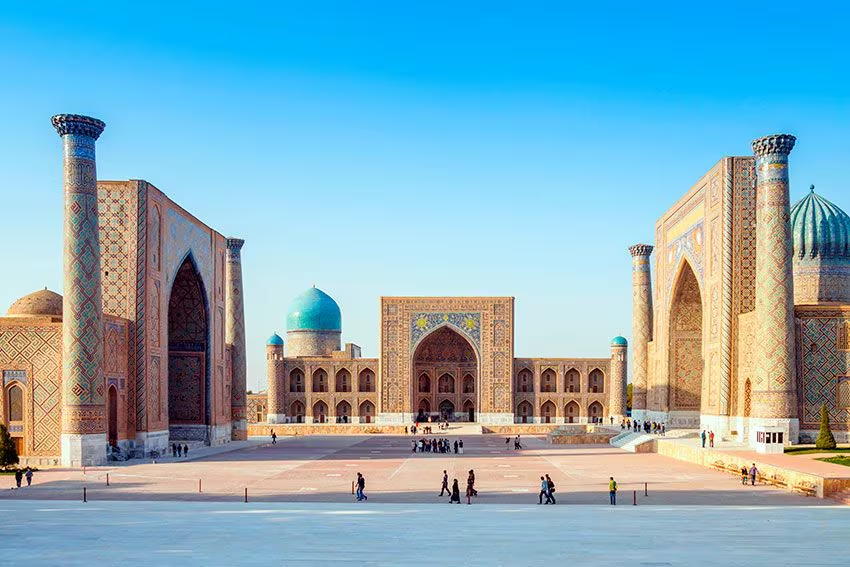Timurid Empire (1370–1507 CE)
Foundation
The Timurid Empire was established by Tamerlane (Timur) in 1370 CE. Timur, a brilliant military commander of Turkic origin, claimed descent from Genghis Khan. He initially consolidated his power in Transoxiana (modern-day Uzbekistan) before launching extensive conquests across Iran and neighboring regions.


Territory
At its peak, the Timurid Empire encompassed parts of Iran, Transoxiana, Afghanistan, India, Iraq, and the Caucasus. Timur’s deep admiration for Iran led him to transform many Iranian cities into cultural and economic centers.
Capitals
- Samarkand: The primary capital and a center for arts and sciences.
- Herat: A major cultural and artistic hub during the reign of Shahrukh Timurid.

Prominent Timurid Rulers
- Tamerlane (1370–1405): Founder and legendary conqueror.
- Shahrukh (1405–1447): A cultured ruler who moved the capital to Herat.
- Baysunghur Mirza: A great patron of art and culture.
- Sultan Husayn Bayqara (1469–1506): The last significant Timurid ruler, who oversaw a cultural renaissance in Herat.

Culture and Arts
The Timurid era was one of the most flourishing periods of cultural and artistic development in Iran’s history. Architecture, miniature painting, calligraphy, and sciences reached new heights.
- Architecture: Notable constructions include the Goharshad Mosque in Mashhad and Gur-e-Amir (Timur’s tomb) in Samarkand.
- Painting: The Herat School of Miniature Painting thrived under the patronage of Shahrukh and Baysunghur Mirza.
- Calligraphy: The Nasta’liq script flourished, with masters like Mir Ali Heravi emerging.


Religion and Politics
The Timurids were Muslims and promoted Islam as the state religion. Despite Timur’s brutality during his conquests, he was a notable patron of scholars and artists.
Decline
The rise of the Safavid Empire and invasions by the Uzbeks gradually led to the Timurid decline in Iran. The empire’s final collapse occurred in 1507 CE
Legacy
The Timurid legacy remains evident in Iran’s art, architecture, and culture. Cities like Herat (in modern Afghanistan) and Samarkand (in Uzbekistan) continue to showcase the grandeur of this era.
